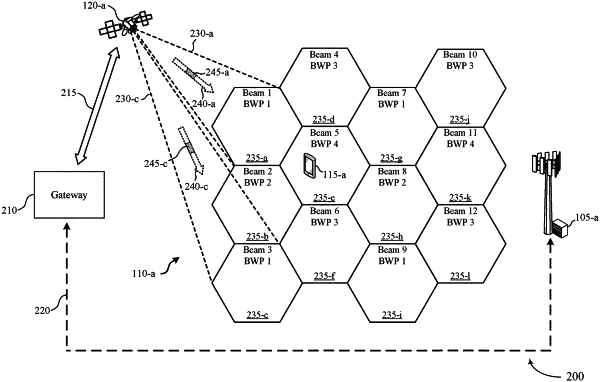| CPC H04B 7/088 (2013.01) [H04L 1/203 (2013.01); H04W 24/08 (2013.01); H04W 24/10 (2013.01); H04W 72/1263 (2013.01); H04W 84/06 (2013.01)] | 31 Claims |

|
1. An apparatus for wireless communications, comprising:
at least one processor; and
memory comprising instructions executable by the at least one processor to cause the apparatus to:
receive a beam measurement configuration associated with one or more beams, wherein each beam of the one or more beams is associated with a respective bandwidth part of one or more bandwidth parts of a radio frequency spectrum according to a beam frequency mapping of a non-terrestrial network, and wherein the beam measurement configuration includes an indication of a plurality of event conditions to initiate beam measurement reporting in the non-terrestrial network;
monitor, based at least in part on the beam measurement configuration, for a first reference signal in a first bandwidth part of the one or more bandwidth parts, the first bandwidth part being associated with a first beam of the one or more beams according to the beam frequency mapping; and
provide, for transmission, a beam measurement report based at least in part on an event condition of the plurality of event conditions being satisfied, the satisfaction of the event condition being based at least in part on a channel quality associated with the first beam.
|